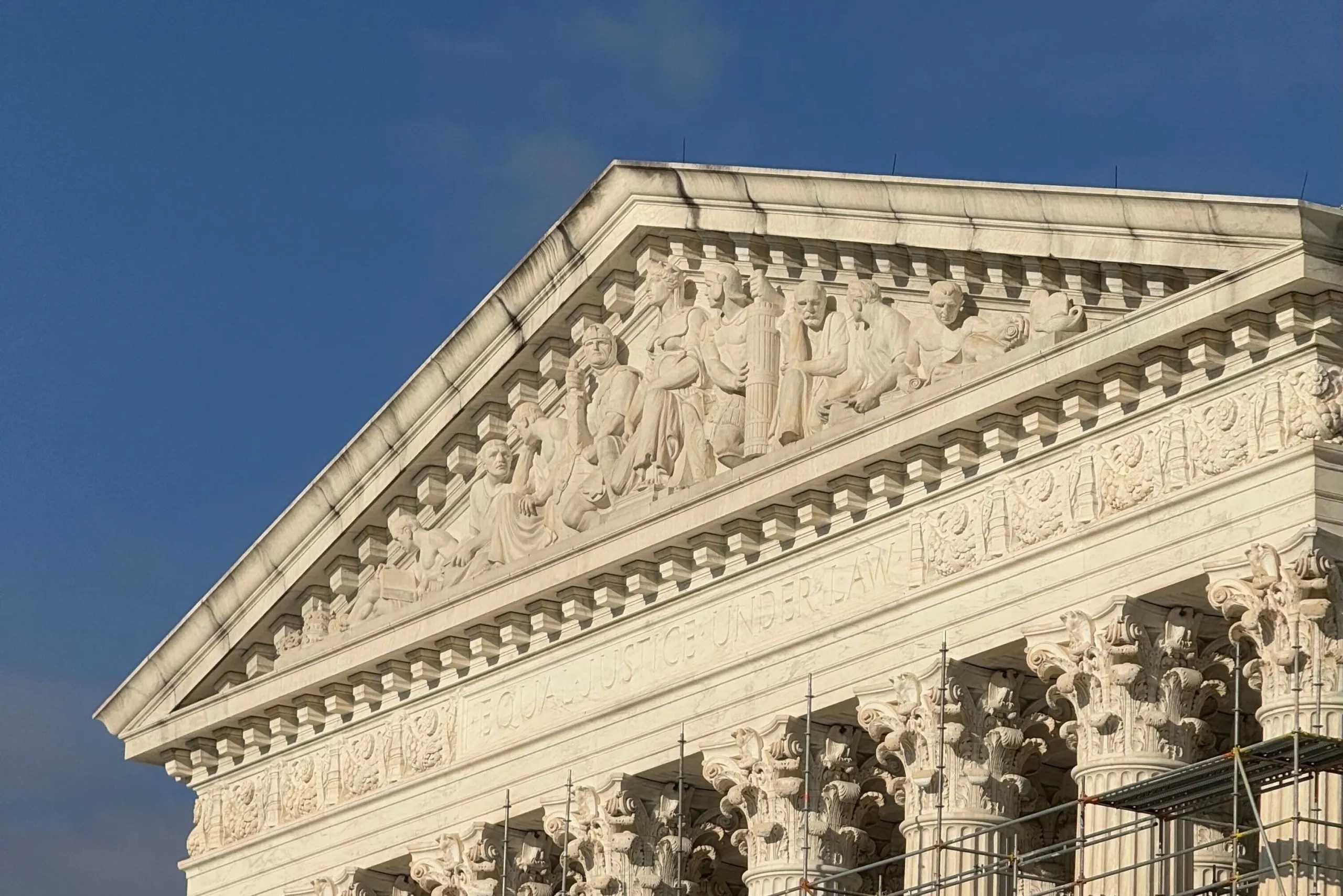SCOTUStoday for Friday, October 17


Wednesday’s argument in Louisiana v. Callais lasted nearly two-and-a-half hours, long enough that some justices mentioned being “tired” or having a “long day” during the following argument in Case v. Montana. And although two-and-a-half hours is long compared to most modern argument sessions, it’s nothing compared to oral arguments in the early 19th century, when the court would hear a single case over multiple days.
Morning Reads
- How Trump might make history at Nov. 5 Supreme Court argument on tariffs (Bart Jansen, USA Today) — President Donald Trump said Wednesday that he may attend oral arguments at the Supreme Court on Nov. 5, when the justices are set to consider his tariff policy. “If we are not allowed to use what other people use against us, there is no defense. It would be a disaster for America,” he said. “That’s why I think I’m going to go to the Supreme Court to watch it.” If Trump does attend, he would become “the first sitting president to attend a Supreme Court argument,” according to USA Today. “Former President Richard Nixon appeared as a lawyer before the high court. William Howard Taft served as president before joining the court as chief justice.”
- The terrifying reality of being a judge in America (The Economist) — In a piece weaving together takeaways from Justice Amy Coney Barrett’s and former Justice Anthony Kennedy’s recent memoirs, The Economist reflected on the challenges facing the judiciary today, including security threats. “American judges, by and large, are decent and conscientious. Faced with lawbreaking by the executive branch, they feel duty-bound to resist it. But doing so requires courage these days. According to the US Marshals Service, which provides security services to the judiciary, 395 judges have received threats this year. Such threats come both from the left and the right.”
- Florida High School Athletic Association urges Supreme Court to reject players pregame prayer case (CBS/News Service of Florida) — One of the highest-profile outstanding petitions in front of the Supreme Court raises the question of whether a private Christian school in Florida should have been free to broadcast a communal prayer over a loudspeaker before a football game in 2015. In a recent filing, the respondent in the case, the Florida High School Athletic Association, contended that the court should not get involved in the dispute, since Florida has already changed state law to allow “brief opening remarks,” such as prayers, before championship games, according to CBS and the News Service of Florida. “Put simply, religious freedom is well protected in Florida and will continue to be protected regardless of the outcome of this purely retrospective lawsuit,” the FHSAA brief said. “The issues in this case are undoubtedly important in the abstract, but the case’s outcome will not have any practical, forward-looking impact on the parties or the state of Florida.”
- Castle Hills lawsuit that went all the way to the U.S. Supreme Court finally has resolution (Scott Huddleston, San Antonio Express-News) — In June 2024, the Supreme Court reinstated Sylvia Gonzalez’s federal civil rights claim against Castle Hills, Texas, enabling her to continue challenging her 2019 arrest for tampering with government records, which she alleged was a form of retaliation for her criticism of the city manager. Now, 16 months later, Gonzalez and the city have settled the lawsuit, according to the San Antonio Express-News. The city agreed to pay Gonzalez “$500,000 in damages and send police and city officials to training regarding First Amendment retaliation.”
- Court backs school in ‘Let’s Go Brandon’ ban case (Lexi Lonas Cochran, The Hill) — The U.S. Court of Appeals for the 6th Circuit on Wednesday sided with a school that barred two students from wearing “Let’s Go Brandon” shirts, holding that the school “did not violate the First Amendment because the shirts were targeted for obscenity, not political beliefs,” according to The Hill. The phrase “Let’s Go Brandon” became a popular meme during the Biden administration because it sounds like “F*** Joe Biden” when chanted. FIRE, the Foundation for Individual Rights and Expression, represents the students and has said it will appeal the decision, meaning that the case could be in front of the justices as a petition for review sometime soon.
SCOTUS Quick Hits
- The court heard argument in four cases this week. Here are the links to SCOTUSblog’s coverage:
- Bowe v. United States: Case Preview and Argument Analysis
- Ellingburg v. United States: Case Preview and Argument Analysis
- Louisiana v. Callais: Case Preview and Argument Analysis
- Case v. Montana: Case Preview and Argument Analysis
- Today, the justices will take part in a private conference to discuss cases and petitions for review. An order list outlining some of what they decide during that conference is expected on Monday at 9:30 a.m. EDT.
- The court is done hearing argument for the month. The November sitting begins on Monday, Nov. 3, with the cases of Rico v. United States and Hencely v. Fluor Corporation.
A Closer Look: Controlled Substances and the Second Amendment
At their private conference today, the justices will consider four petitions for review from the Trump administration on controlled substances and gun rights. Federal officials have urged the court to decide whether “the federal statute that prohibits the possession of firearms by a person who ‘is an unlawful user of or addicted to any controlled substance[]’ violates the Second Amendment.”
Among the four petitions, the administration identified United States v. Hemani as the lead case. In Hemani, the U.S. Court of Appeals for the 5th Circuit ruled that the government can only apply the challenged statute to individuals “who were actually impaired at the time of possessing the firearm.” That ruling, according to the cert petition, created uncertainty around similar state-level gun restrictions and deepened a division among federal courts of appeals, since at least one has upheld the statute and another has said the statute should only apply when drug use creates a public safety threat.
In his latest Relist Watch column for SCOTUSblog, John Elwood said Hemani is “a likely grant.” If the justices do take it up, it could become the court’s third major gun rights case in four years. One year ago, the court upheld a law barring individuals who are subject to domestic-violence restraining orders from owning guns, and in 2022, the court emphasized the importance of tying Second Amendment rulings to “history and tradition.”
SCOTUS Quote
MR. ROWLEY: Justice Gorsuch, I have a few responses to that.
JUSTICE GORSUCH: I bet you do.
On Site
Argument Analysis
Amy Howe on Case v. Montana
The Supreme Court on Wednesday appeared ready to side with police officers in Case v. Montana, a Montana man’s challenge to a 2021 incident that left him with a gunshot wound to the abdomen after police entered his home. The officers say they only went into the man’s home to help him, not because they believed that he was committing a crime. The question before the justices was how certain police officers must be that there is an emergency before, as in this case, going into a house without a warrant, and most justices signaled on Wednesday “that they were likely to give police officers more leeway in such situations, rather than adopting the more stringent standard that the Montana man, William Case, advanced,” Amy wrote in her analysis.
Richard Cooke on Bowe v. United States
On Tuesday, the justices heard argument in Bowe v. United States, a case involving a complex (and confusing) area of law, habeas, which allows people confined by the government to challenge the grounds for their detention. In his argument analysis for SCOTUSblog, Richard Cooke walked through the justices’ debate over the Supreme Court’s jurisdiction and in what context restrictions on second or successive habeas corpus applications apply to federal inmates.
Contributor Corner
In her first Clear Statements column, Abbe R. Gluck, a professor of law at Yale Law School, explored what’s happened in the year since the court overruled Chevron v. Natural Resources Defense Council in Loper Bright Enterprises v. Raimondo and brought an end to “a 40-year regime under which, if a statute regulating an agency contained ambiguous terms, courts generally would defer to the agency’s expertise in resolving those ambiguities – even if that meant that statutory meaning could change from one administration to the next.”
While Chevron is dead, the administrative state still breathes. But it does so under a new framework – one grounded in text, constrained by a major questions doctrine whose boundaries are now unclear, and shaped by the faint, flickering shadow of Skidmore v. Swift & Co. This term should tell us a lot more about whether and how these doctrines will endure.
Posted in Featured, Newsletters